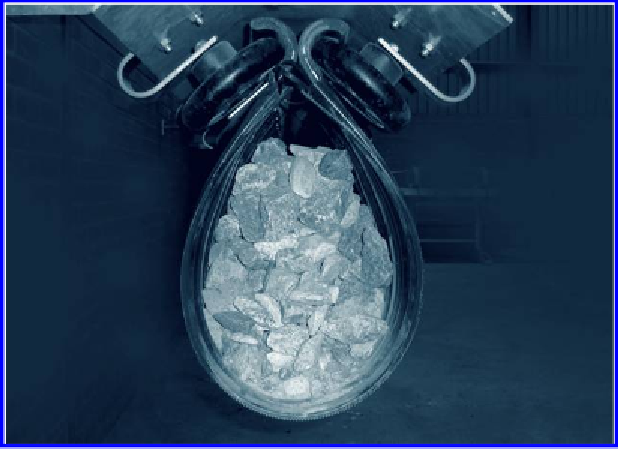Environmental Engineering Reference
In-Depth Information
FIGURE 22.3
Cross-section through Enclosed
Conveyor System Developed by ICSI
In-pit crushing with conveyor trans-
portation is becoming more common
as open Pit mines become larger and
deeper, and with the availability of far
more versatile conveying system.
1998). This strategy produces less waste and thereby reduces waste treatment and disposal
costs. For example, sensing technologies which allow a mining machine to follow a seam
of ore may result in less waste being removed. An
in situ
separation process in the mine
may result in less waste material handled by a processing plant. Although these advances
result in increased productivity, they may also signii cantly reduce waste generation. Other
innovations, in instrumentation and computer hardware and software - particularly
Expert Systems - have resulted in progressive improvement across many areas of min-
ing and mineral processing: these include optimizing fuel injection, detecting and diag-
nosing impending malfunctions, automatically adjusting throughput and the delivery of
reagents in response to real-time monitoring of process variables, and responding to upset
conditions or emergencies. Such technologies have, in particular, seen the enhancement of
recovery rates. In many cases, there have also been improvements in product quality and
the minimization of waste. Similar advances are likely to continue, although perhaps at
declining rates, as process instrumentation and computing capability continue to improve.
Another major focus of mining research is 'automated mining' including remote con-
trol mining using robotics. Mining by remote control has been mainly used in circum-
stances that are dangerous for miners. These include high-grade underground uranium
mines where exposure to radiation is a concern, and very deep mines where 'rock bursts'
may occur. Continuous mining machines have been used for many years in coal mining.
Recent research has sought to develop continuous mining machines for other applications,
including mining of lateritic ores.
More recently, the impetus for remote control of mining and associated operations is being
driven by a shortage of experienced people willing to work in remote locations.
Case 22.2
highlights research and development sponsored by Rio Tinto which aims at automating a
wide range of activities from blast hole drilling to ore transportation and port loading.
Tailings Management
Non-conventional approaches to tailings disposal are becoming more common in response
to otherwise intractable problems associated with conventional tailings disposal. Pulp










Search WWH ::

Custom Search